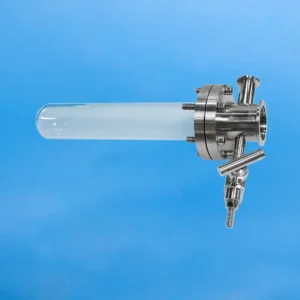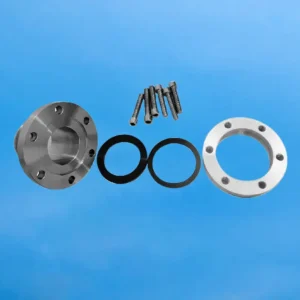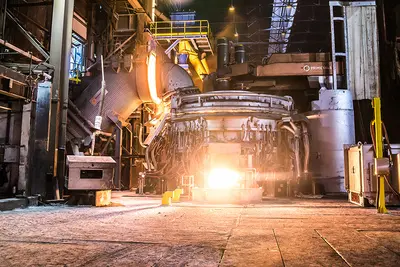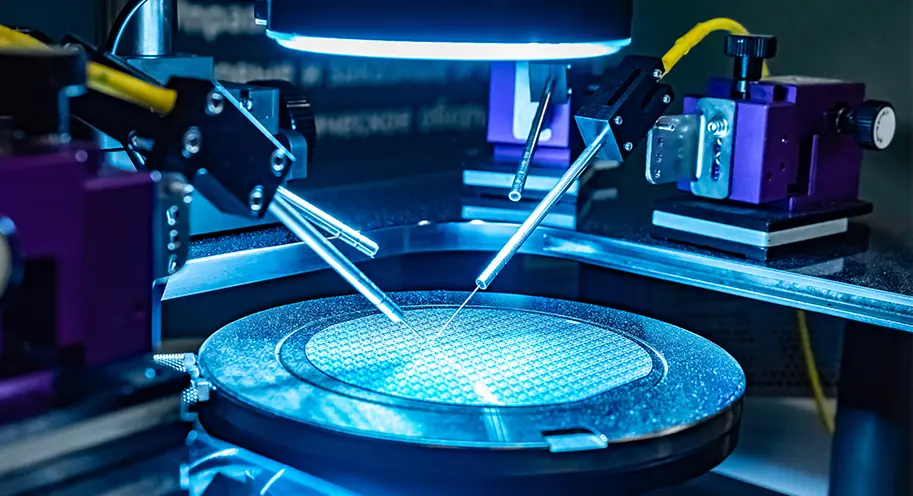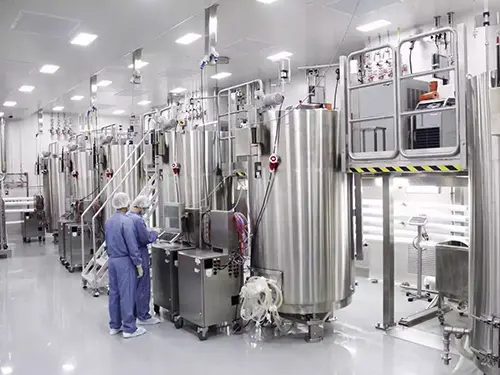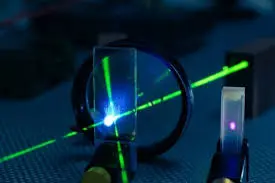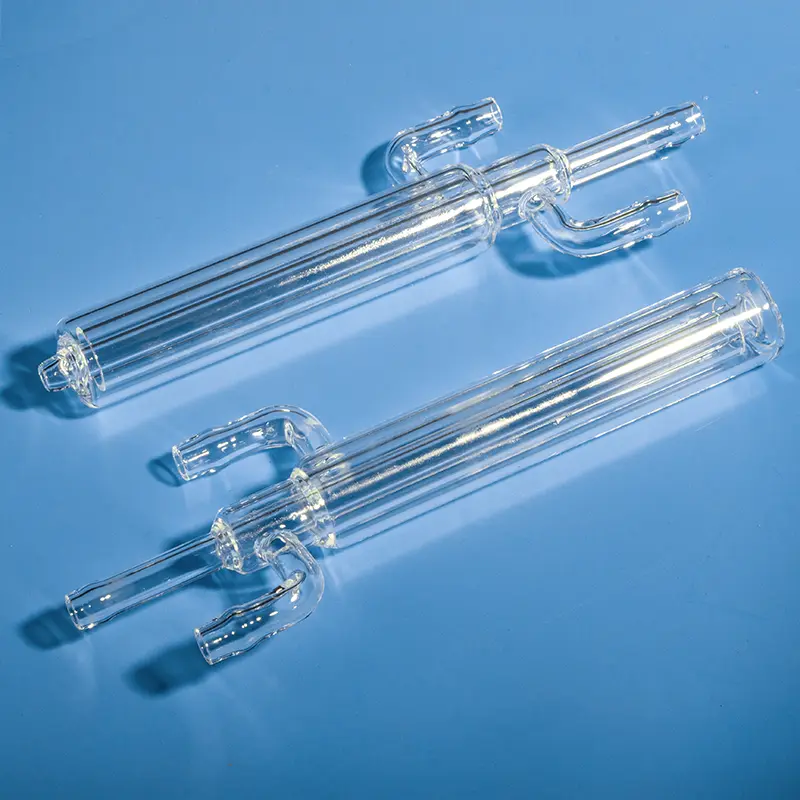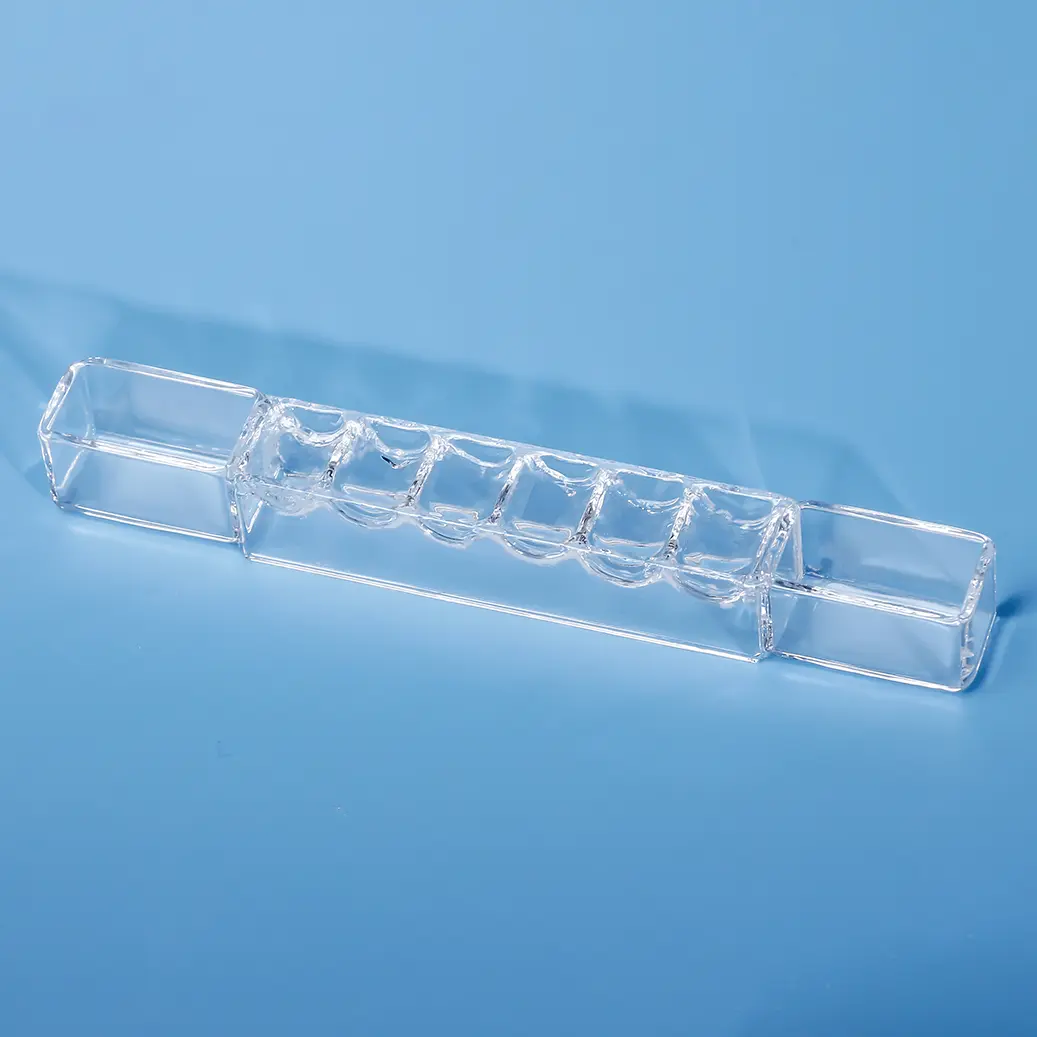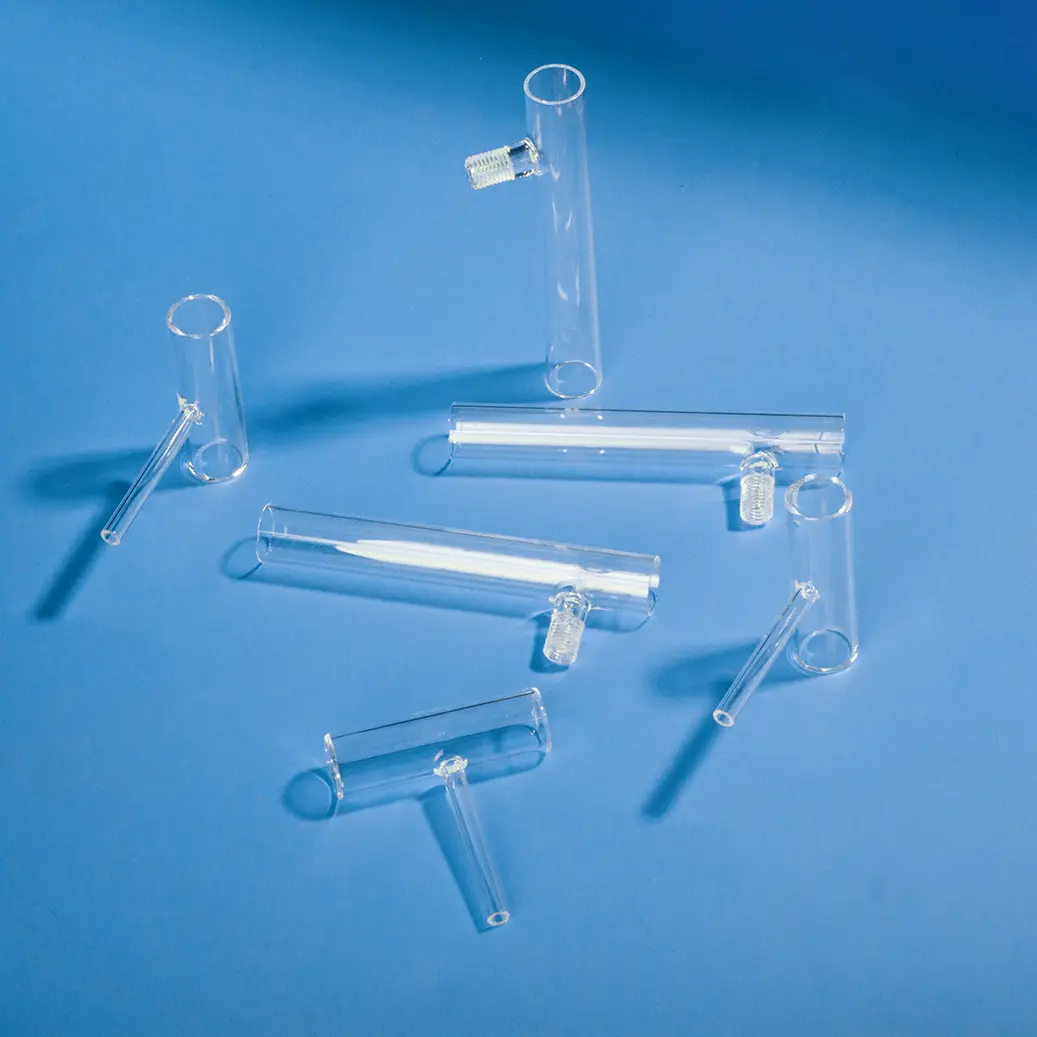This product is a high-quality, closed-end quartz tube featuring a standard flange connection. The quartz glass material ensures excellent thermal resistance, chemical inertness, and high purity, making it suitable for various demanding laboratory and industrial environments. The closed-end design allows the tube to be used as a standalone container or as part of a complex system. The flange connection facilitates easy assembly and disassembly with other equipment or piping, allowing for convenient maintenance and cleaning. Widely used in fields such as chemistry, semiconductors, pharmaceuticals, and optics, this product is an ideal choice for high-precision experiments and industrial production.
| Property Content | Property Values |
|---|---|
| SiO2 | 99.99% |
| Density | 2.2×10³ kg/cm³ |
| Hardness | 5.5 - 6.5 Mohs' Scale 570 KHN 100 |
| Tensile Strength | 4.8×10⁷ Pa (N/mm2) (7000 psi) |
| Compression Strength | >1.1×10⁹ Pa (160,000 psi) |
| Coefficient of Thermal Expansion | 5.5×10⁻⁷ cm/cm·°C (20°C-320°C) |
| Thermal Conductivity | 1.4 W/m·°C |
| Specific Heat | 670 J/kg·°C |
| Softening Point | 1730°C (3146°F) |
| Annealing Point | 1210°C (2210°F) |
| Strain Point | 1120°C (2048°F) |
| Work Temperature | 1200°C (2192°F) |
| Electrical Resistivity | 7×10⁷ ohm cm (350°C) |
| Size | Customized |
| Logo | Customized Logo Accept |
High-Purity Material
Made from high-purity quartz glass, ensuring extremely low impurity content to avoid contamination of sensitive experiments or industrial processes.
Excellent Thermal Resistance
Offers outstanding high-temperature resistance, allowing stable operation in high-temperature environments and making it suitable for applications such as heat treatment or high-temperature reactions.
Chemical Inertness
Quartz glass exhibits excellent chemical inertness to most chemicals, enabling safe use in various chemical environments.
Convenient Flange Connection
Equipped with a standard flange connection, facilitating easy assembly and disassembly with other equipment or piping systems for convenient maintenance and cleaning.
Application Scenario
Typically, this quartz tube can withstand temperatures up to 1200°C, and in some special cases, even up to 1600°C. However, the specific temperature resistance depends on the quality of the quartz glass and the environmental conditions. Please refer to the product specifications for accurate values.
Quartz glass has very good chemical inertness and can withstand most acids, bases, and organic solvents. However, please avoid contact with highly corrosive substances such as hydrofluoric acid (HF), hot concentrated alkalis, and molten alkali metals, which may corrode the quartz glass.
The flange connection, when fitted with appropriate gaskets, provides good gas-tight and liquid-tight sealing. It is crucial to choose a gasket material (such as PTFE, Viton, etc.) that matches the application scenario. Also, ensure that the flanges are properly aligned and the bolts are tightened to the specified torque for optimal sealing.
Frequently asked questions
Quartz glass is a hard and brittle material with excellent physical and chemical properties, extremely high mechanical hardness, good electrical insulation, high temperature and corrosion resistance, low and stable delay performance, good light transmittance, etc. It is widely used in semiconductors, optics, electricity, chemistry, aerospace, automobiles and other fields. Hard and brittle materials are difficult to process, and many fields urgently need cutting processes with small edge collapse, less material loss, low cross-section roughness, and a wide cutting thickness range. The traditional cutting method of quartz glass is mechanical cutting, that is, wheel cutting. Non-traditional cutting methods include water jet cutting, electrochemical discharge wire cutting, continuous laser cutting, etc. Mechanical cutting has low cost, but the contact between the wheel and the material causes large tool wear, and the material is easily contaminated by the tool. Quartz glass is prone to edge collapse, microcracks, and residual stress, which affects the strength and performance of the material! It is difficult to achieve curve cutting and requires post-processing, such as grinding and polishing. Laser cutting does not directly contact the material, has no contact stress, and can perform complex curve cutting. Picosecond laser has the advantages of small spot diameter, high precision, short action time with the material, and small action area, and is suitable for the processing of hard and brittle materials.
。







